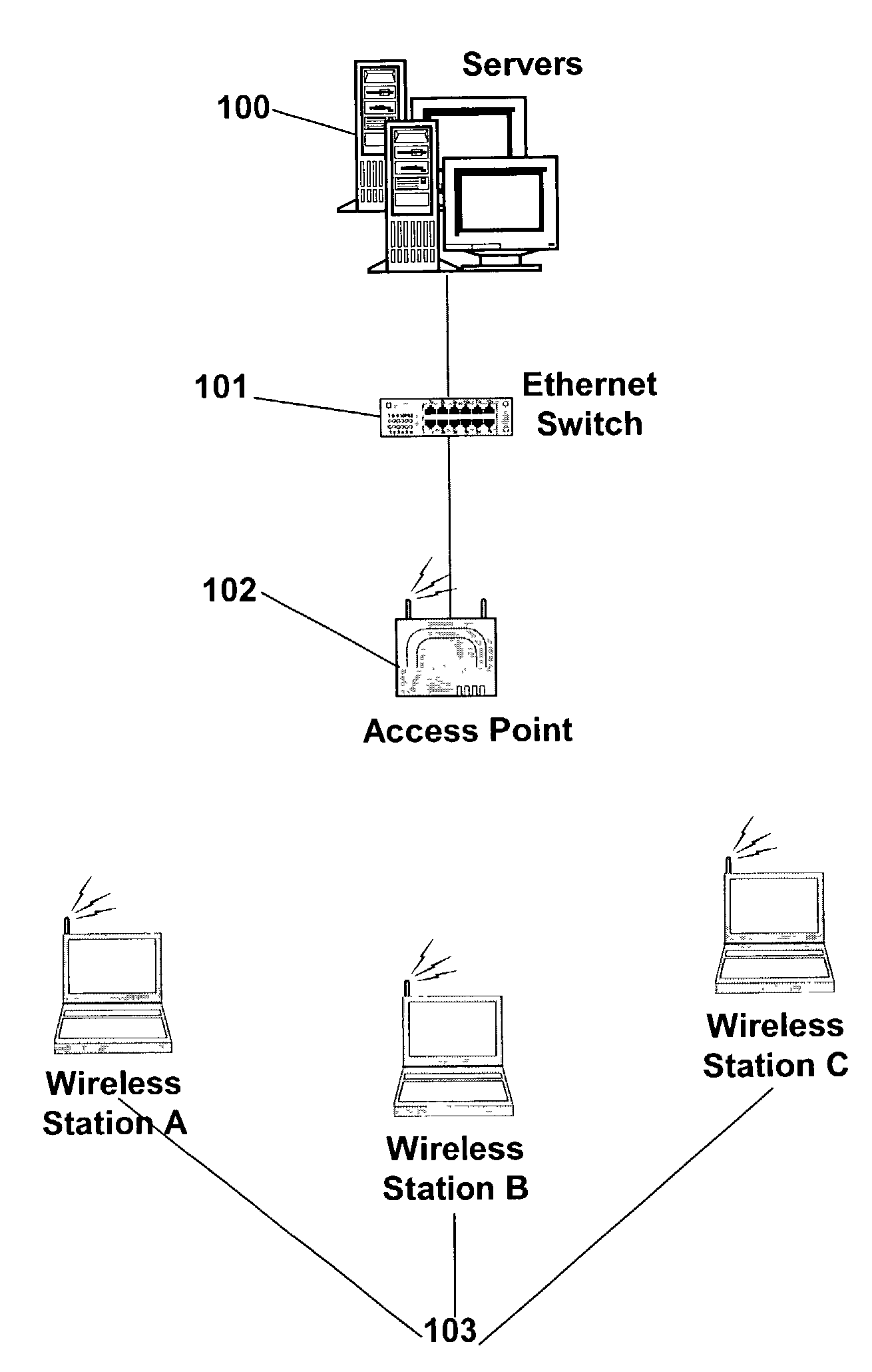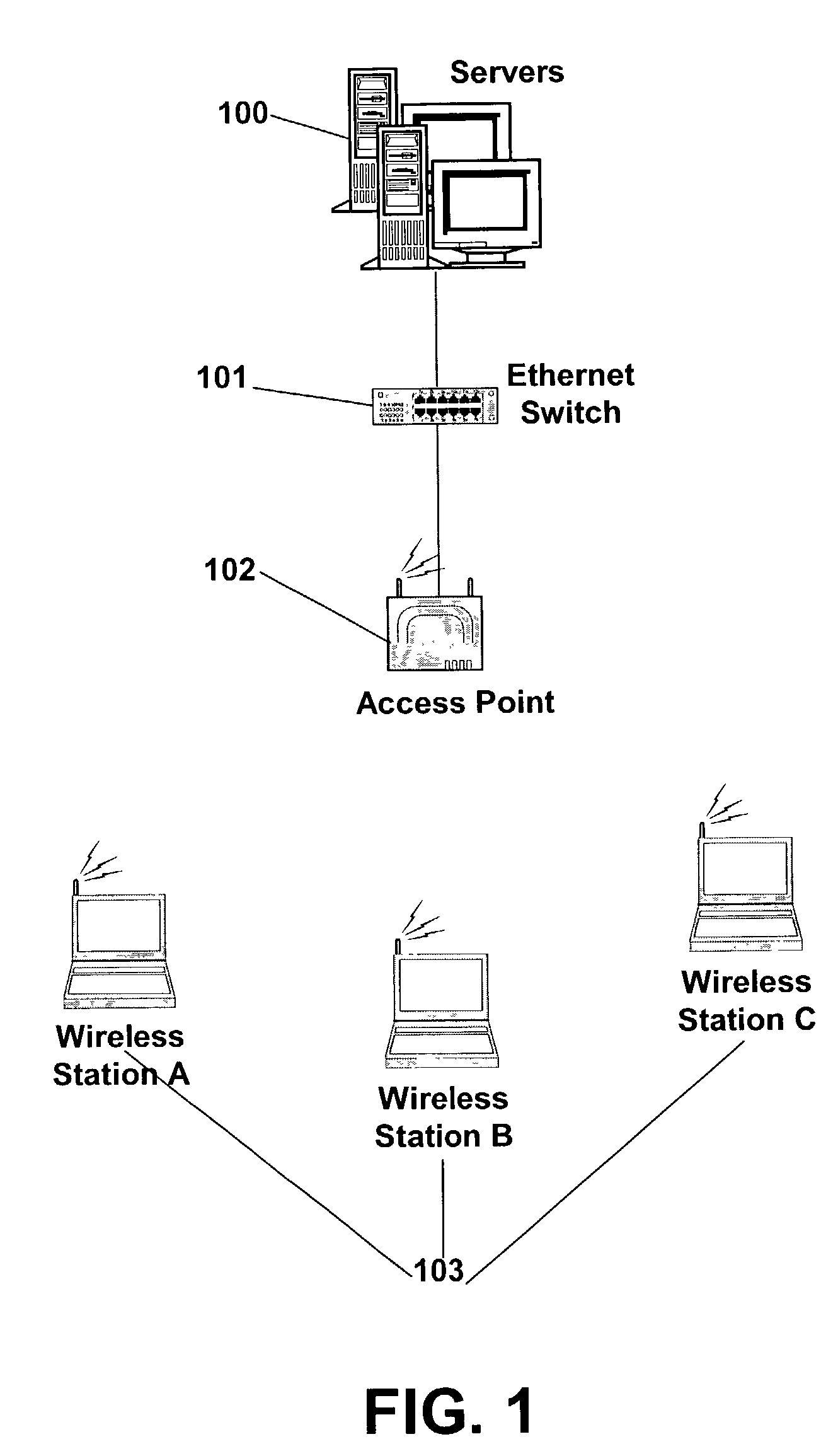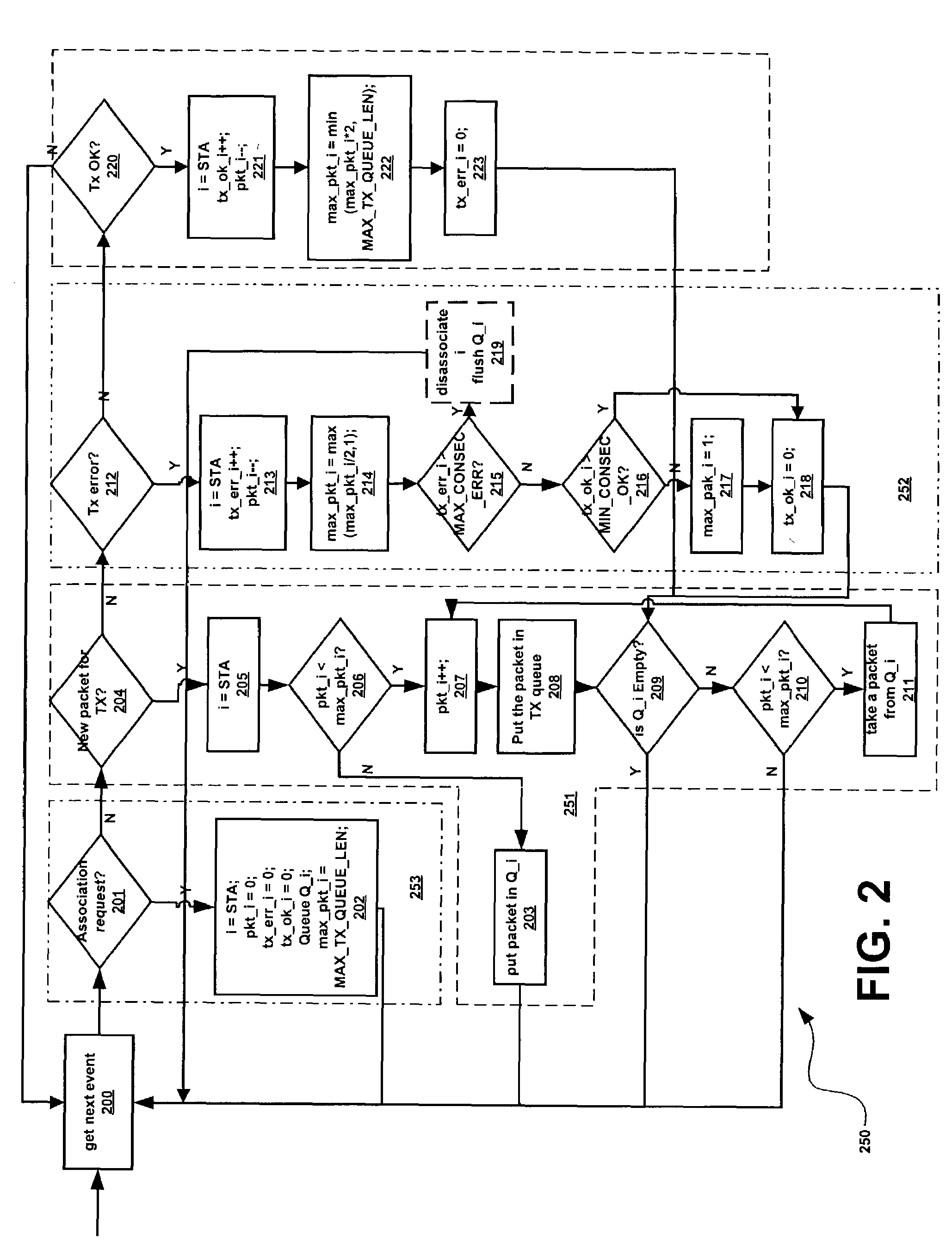System and method for an IEEE 802.11 access point to prevent traffic suffering bad link quality from affecting other traffic
- Summary
- Abstract
- Description
- Claims
- Application Information
AI Technical Summary
Benefits of technology
Problems solved by technology
Method used
Image
Examples
Embodiment Construction
[0016]The present invention is a system and method for reducing the impact of bad links between an AP and wireless stations on other traffic competing for bandwidth over the wireless medium by dynamically manipulating the limit on the number of packets that can be queued in the AP for transmission to a given wireless station. If the link between the AP and a station is good, the limit is set to a pre-determined maximum. If the link degrades and a transmission error, this maximum is reduced in a pre-determined way to limit the impact of retransmissions on other traffic being handled by the AP.
[0017]Other refinements are provided by the preferred embodiment of the present invention. The preferred embodiment places a limit on the number of consecutive errors that can occur on a link and dissociates a station once that limit is exceeded. Further, if the link keeps going bad during a series of packet transmissions to a wireless station, the system and method of the present invention only...
PUM
 Login to View More
Login to View More Abstract
Description
Claims
Application Information
 Login to View More
Login to View More - R&D
- Intellectual Property
- Life Sciences
- Materials
- Tech Scout
- Unparalleled Data Quality
- Higher Quality Content
- 60% Fewer Hallucinations
Browse by: Latest US Patents, China's latest patents, Technical Efficacy Thesaurus, Application Domain, Technology Topic, Popular Technical Reports.
© 2025 PatSnap. All rights reserved.Legal|Privacy policy|Modern Slavery Act Transparency Statement|Sitemap|About US| Contact US: help@patsnap.com



